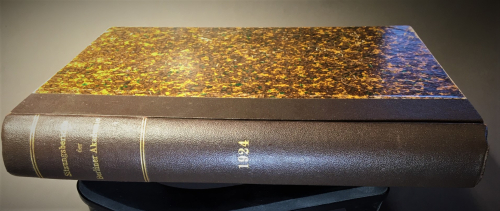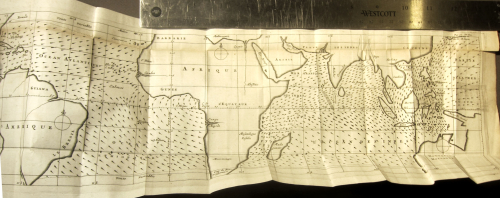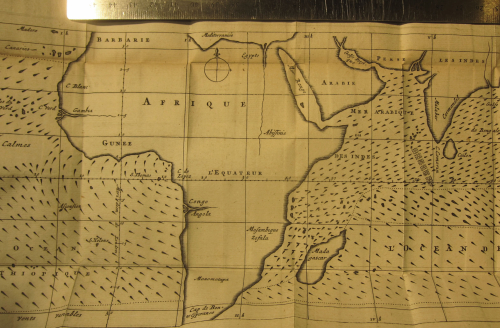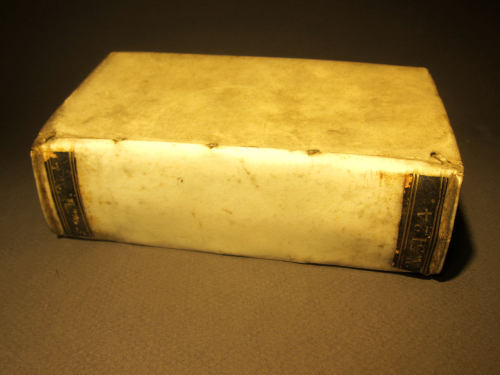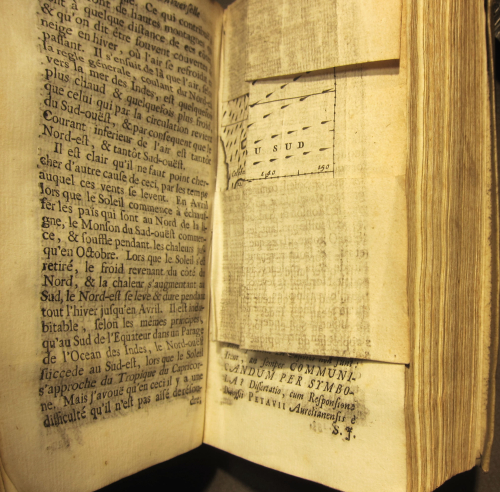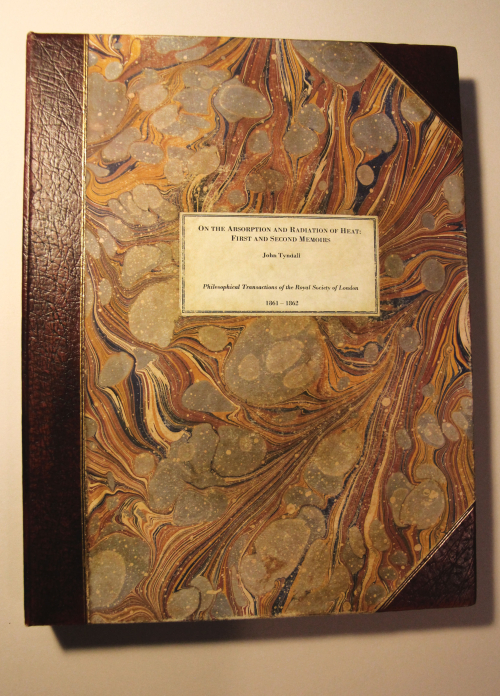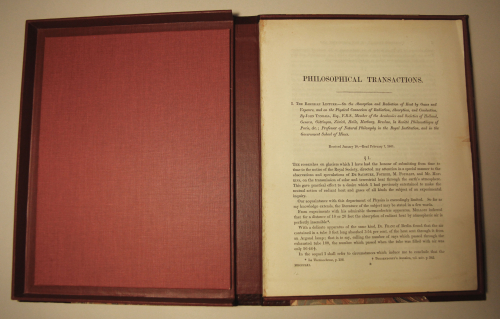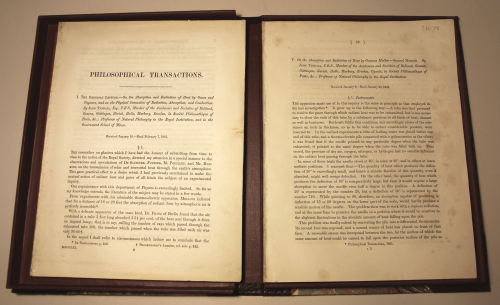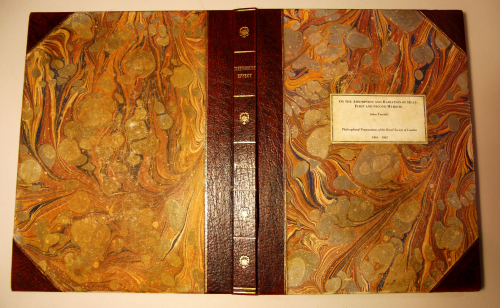BOHR, Niels. "Zur Frage der Polarisation der Strahlung in der Quantentheorie", in Zeitschrift fur Physik, 1921, vol. 6., pp 1-9, offered in the entire volume of pp iv, 416pp. This is an institutional copy, with (tasteful) bookplate and a few round rubber stamps on the interior--no exterior markings. This is a FINE copy, and it feels as though it was very infrequently used. . A very nice copy. $300
“[T]here was rarely in the history of physics a comprehensive theory which owed so much to one principle as quantum mechanics owed to Bohr's correspondence principle” (Jammer 1966, p. 118), from the Stanford Encyclopedia of Philosophy, here.
A faint damp stain in right margin. First edition. ".in the hands of Bohr and his school the correspondence principle was like "a magic wand that allowed the results of the classical wave theory to be of use for the quantum theory.but a costly price had to be paid. For taking resort to classical physics in order to establish quantum-theoretic predictions, or in other words, constructing a theory whose corroboration depends on premises which conflict with the substance of the theory, is of course a serious inconsistency from the logical point of view. Being fully aware of this difficulty, Bohr attempted repeatedly to show "the correspondence principle must be regarded purely as a law of quantum theory, which can in no way diminish the contrast between the postulates and electrodynamic theory." The earliest allusion to such a conception may perhaps be found as early as 1921 in a paper (the paper offered) in which Bohr briefly discussed the function of the principle."(Max Jammer).
The First Appearance of "Correspondence Principle"
BOHR, Niels. "Über die Serienspektra der Element", in Zeitschrift für Physik, 1920, volume 2, pp 423-478. Very prettily bound in reddish cloth and matching marbled boards, red cloth tips. This is an institutional copy, with (tasteful) bookplate and a few round rubber stamps on the interior--no exterior markings. This is a FINE copy, and it feels as though it was very infrequently used.
“[T]here was rarely in the history of physics a comprehensive theory which owed so much to one principle as quantum mechanics owed to Bohr's correspondence principle” (Jammer, The Conceptual Development of Quantum Mechanics, p 118, 1966) The correspondence principle was first articulated (Stanford Encyclopedia of Philosophy) in 1913 in “On the constitution of atoms and molecules”, Philosophical Magazine, 26: 1–25, 476–502, 857–75, then again in 1918, and then formulated here in the 1920 paper ("On the series spectra of the elements”), In where the terms “correspondence” and “correspondence principle” first appear (Nielsen, “Introduction to Niels Bohr Collected Works, Vol. 3”, in Bohr (1976), pp. 3–46. 1976, p. 21, and Stanford Encyclopedia of Philosophy.)
BOHR, Niels. Ueber die Anwendung der Quantentheorie auf den Atombau. I. Die Grundpostulate der Quantentheorie. In Zeitschrift fur Physik, volume 13, 1923, pp 117-165. (“On the application of the quantum theory to atomic structure,” Proceedings of the Cambridge Philosophical Society (supplement), Cambridge: Cambridge University Press, pp. 1–42. First published in Zeitschrift für Physik, 13 (1923)) Very prettily bound in reddish cloth and matching marbled boards, red cloth tips. This is an institutional copy, with (tasteful) bookplate and a few round rubber stamps on the interior--no exterior markings. This is a FINE copy, and it feels as though it was very infrequently used. $350

